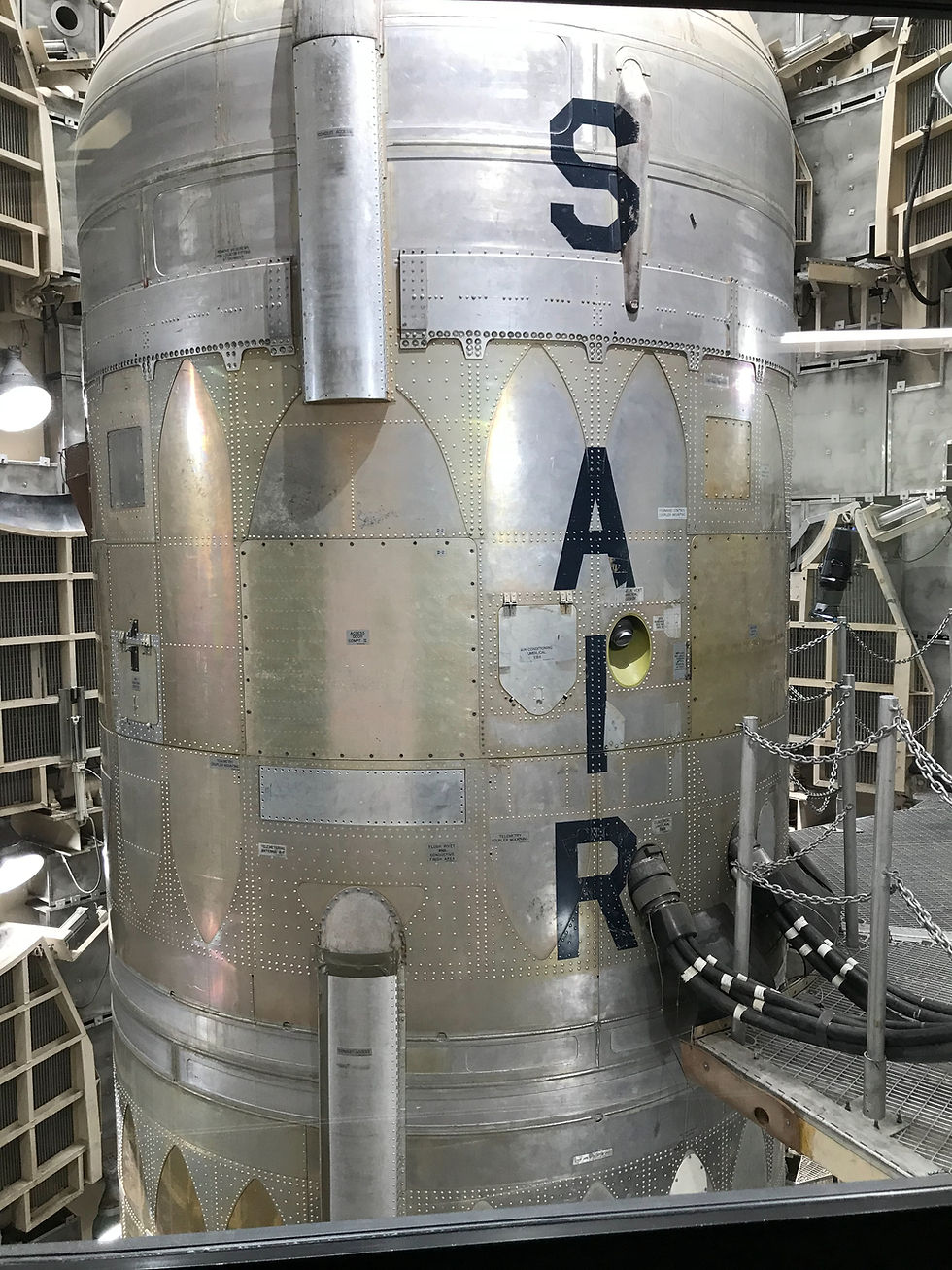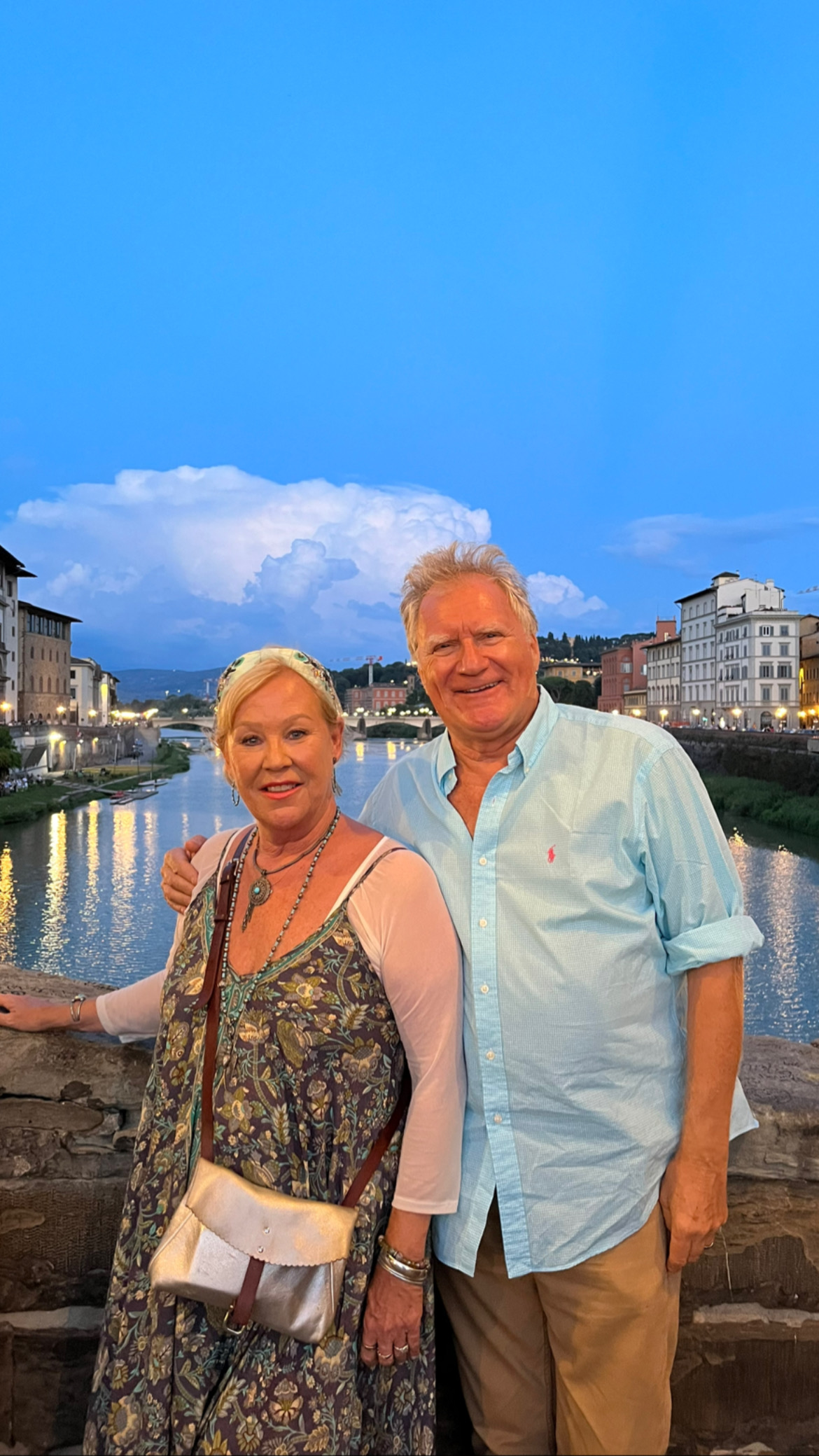46. TITAN II MISSILE, ARIZONA
- Des & Sandie Nichols
- Sep 10, 2022
- 6 min read
Updated: Jun 24, 2024
Just outside Tucson lies the perfectly preserved corpse of a monster, a fire-breathing dragon once so fearful, so terrible that the imagination is still unable to grasp the enormity of its former destructive powers.
Today, this monstrosity that for over twenty years struck nightmare terror into the hearts of every living person on this planet offers no threat and lies motionless, deep under ground. The beast is dead, its overlong life finally ended by the eventual conquest of human reason over years of out-of-control tribal sabre rattling.
For this is the Titan II missile, America’s champion gladiator in the nuclear coliseum of the Cold War and the power behind the deadliest weapon ever produced by the United States, standing proudly and defiantly to this day in its snug and sinister silo from where it once threatened the world with the ultimate armaggedon. This, the last Titan II in existence, remains as a permanent and ingloriously reminder of the horror that put the planet under an oppressive pall of fear from 1962 to 1984. Today it is benign, decommissioned, neutered of its awesome power, retired in its old home formerly known as Air Force Facility Missile Site 8 or Titan II ICBM Site 571-7.
Thankfully, the scientific taxidermist has done his job, having removed both its venomous sting and its ability to fly, but curiously its menacing elegance remains intact.
With the power of two 747s (that's 430,000lb of thrust, if that means anything) the two-stage liquid fueled rocket was the chosen intercontinental ballistic missile in the West's nuclear deterrent program. But it was, of course, its cargo that was the true terror. The W-53 nuclear bomb ensconced in its capsule weighed 6,200lb and was by far the most destructive warhead ever deployed in a US missile. It measured just 12ft 4in in length with a 50in diameter but could wipe out a city in a holocaust from hell.

The Titan II rocket was built in the very early sixties and stood in its blocks, primed and ready to be unleashed at a moment's notice, for 22 years. That is until Reagan and Gorbachov, with crucial support from one Mrs Thatcher, miraculously and mercifully agreed to ‘tear down those walls’ and to defuse most of their respective nuclear arsenals. All Titan II missile sites in the US were demolished - 18 in Kansas, 17 in Arkansas and 16 in Arizona, but this one alone survives as a museum piece, sensibly kept as a National Historic Landmark.
This was America's largest operational land based nuclear missile and was loaded with a 9 Megaton nuclear bomb - that is almost eight times more powerful than the biggest bomb America has today.

On arrival at this small dusty compound, we were completely underwhelmed. We had driven 27 miles south on Highway 19, leaving at junction 69, in the middle of the desert wilderness. We drove only a short mile before a sign directed us into a small lane on the right. This curved and led to a car park outside a plain, unassuming hangar. It could be mistaken for an industrial unit.
We entered and were immediately confronted by a missile cone and a replica of the nuclear warhead, the first signs of what was to come. Joining a small group, we faithfully followed our guide, a former USAF fighter pilot, as he took us outside to a fenced area of desert, with a few retractable tall pole aerials poking out of the ground. These, we were to learn, received and transmitted the critical doomsday communications, crucial to ignite the spark of a nuclear meltdown. It was all starting to become more real. In the center of the compound was a low, unobtrusive, sand-colored hunk of concrete. This was the mouth of the silo. It was this that would have opened up in seconds to release the rocket as the sirens wailed. As demanded by the Russians, it is now firmly sealed half-opened, half-shut.
We were guided through an outside hatch in the ground and down several levels of metal stairs, our every step resounding and echoing as we descended lower and lower.

On the way, we passed by two massive blast doors, each weighing three tons, but each so finely set up that it was moveable with one hand. These doors let you pass through the 8ft reinforced walls into the Control Room. Like the set of early science fiction, this small capsule, deep underground, was the epicenter of America’s part in the Cold War. The whole room was suspended on giant springs to protect it, the crew and the precious electronics from the earthquake of the rocket blast - or from the impact of an attacking bomb.

We were both lucky to be selected from our group to take the actual seats that had been occupied 24/7 by the on-duty Commander and his Lieutenant and to play their roles, step by step. First, the terrifying scream of the deafening alarm and the flashing red lights plunge you into realism. Then the process begins. We flick switches that once gave life to the rocket. We exchange procedures between us, to ensure we are in total agreement and harmony. We were even given the keys that, on cue, we had to turn simultaneously to activate the process. Then the famous code from on high was taken from the punched ticker-tape and transposed onto the revolving drums of letters on the control panel display. This was a rare awe-inspiring moment in our lives. To be seated facing the actual wall of dials and switches, knowing that this was once the very place from which World War Three could have been triggered, had a genuinely powerful impact. This was not a movie moment. This was a total immersion into arguably the most mind-bending realism imaginable.



The highest state of alert in this Control Room had been very early in its existence, on that fateful day, November 22nd 1963, when President Kennedy was shot and killed in Dallas. Immediately, a tense Command ordered the keys to be placed on the consoles, ready for action. In the mayhem of the assassination, no-one could be sure whether or not the Russians were involved. The keys, however, were never inserted.
Leaving the Control Room, we passed through a long metal corridor, a tunnel called the 'cableway', to the missile itself. After all this drama, the anticipation to see the fearsome protagonist was great.

This is when we first set our eyes on the Titan II, admiring it in silence from just a couple of feet away. It was an eerie moment. We stood there transfixed, staring at this silver streamlined rocket, as if admiring a pristine historic classic car, like a 1930's Bugatti. The beast stood proudly but forlornly in its splendid isolation. With a height of 103ft, erect, shiny and elegant, it stands as an enduring symbol of science at it most advanced and, equally, of those bad old days, a gleaming relic of our near history.


Driving back to Tucson, it seemed to us that the whole concept of 'deterrence' is a bizarre confusion of self-justification and paradox. The idea, we had been told, is to deter, not to produce a threatening offensive attack weapon But, in order for the deterrent to be effective, it has to be a faster, more accurate, more powerful strike weapon than the ones pointing back at you. The real difference, what made it a deterrent, we deduced, was that it did not need to be secret, in fact quite the opposite. We had asked why there was just a single 12ft chainlink wire fence around the base to deter prying eyes, with no outer perimeter fence of rolled barb wire, walls or cameras. "They wanted everyone to know what we had, even the Russians. That's the point" came the enlightening reply.
We both have lived through those Cold War days. Admittedly, my child bride Sandie was just out of 'diapers' (nappies) at the time. But I, like many of you, still recall exactly where I was at these moments of history - in the paneled dining room at school as the Cuban Missile Crisis deadline came and went, in the school hall watching a grainy black & white TV as the tragedy of JFK's murder unfolded. And, years later, the memories of the chilling atmosphere of Moscow, Leningrad, Uzbekistan and the Berlin Wall in those dark days of the USSR will remain forever. We can thank Reagan and Gorbachov for the remarkable perestroika that ended this inhumane stand-off which had for so long cast a shadow over every day of everyone's life. It was a time of insanity and the irony of the acronym of the policy of Mutually Assured Destruction (MAD) is not lost on anyone. As our guide said "we keep this base as a reminder to the future generations that, unless we remember our mistakes, we may well repeat them".
Lest We Forget.
BACK TO NATURE
As we finally prepare to leave TUSCON, we made sure to find time to make two special final days' out that every visitor should put on their list.
One is a tour up the Santa Catalina mountains which overlook Tucson, to the summit of its highest mountain, Mount Lemmon. As we climbed over 6,000ft in our little Mini from the 2,300ft plateau on which the city sits to the snow covered ski resort near the peak, the temperature fell from 70F to below freezing in 30 minutes. The drive is a scenic joy as you look down upon the road falling away into the distance behind you and the mountain range rising impressively all around you.



The other great day out is the extensive Arizona-Sonora Desert Museum, with pathways through acres of desert flora and fauna. As you walk through the thousands of cacti, you discover enclosures housing all the local wildlife, from mountain lions and coyotes to local deer and pig-like creatures we had never seen before. There are about a dozen small buildings on the way, each with beautifully presented vivaria, housing everything from snakes and spiders to beavers and bears. A large humming-bird aviary completes the experience. A thoroughly enjoyable and recommended 'stroll in the park'.


So we say a fond farewell to Tucson which has given us so many memories and such good entertainment. Next stop is Yuma, 250 miles south-west on the Mexican border, for two nights then on to Southern California. Get the flares out. It’s like being in 1967 again.




Comments